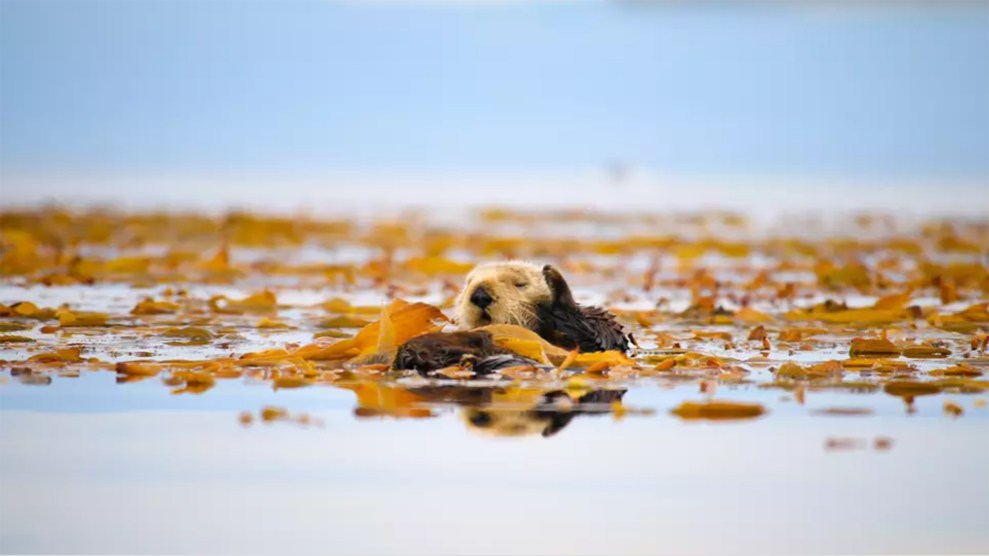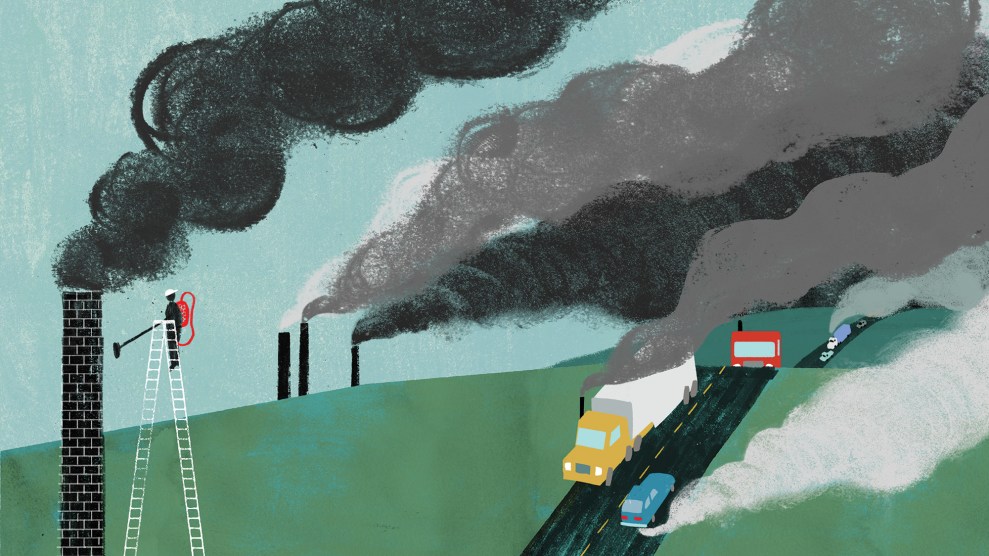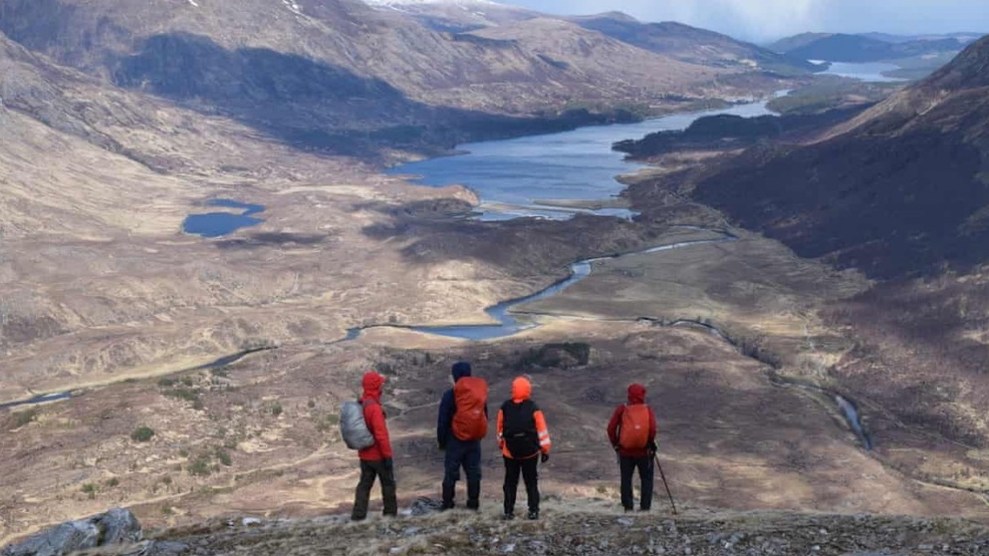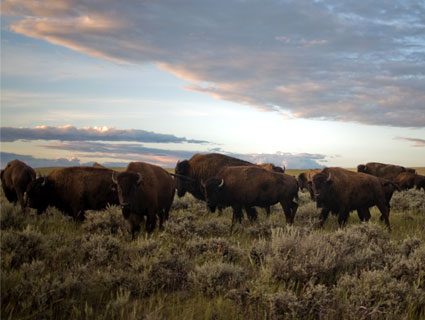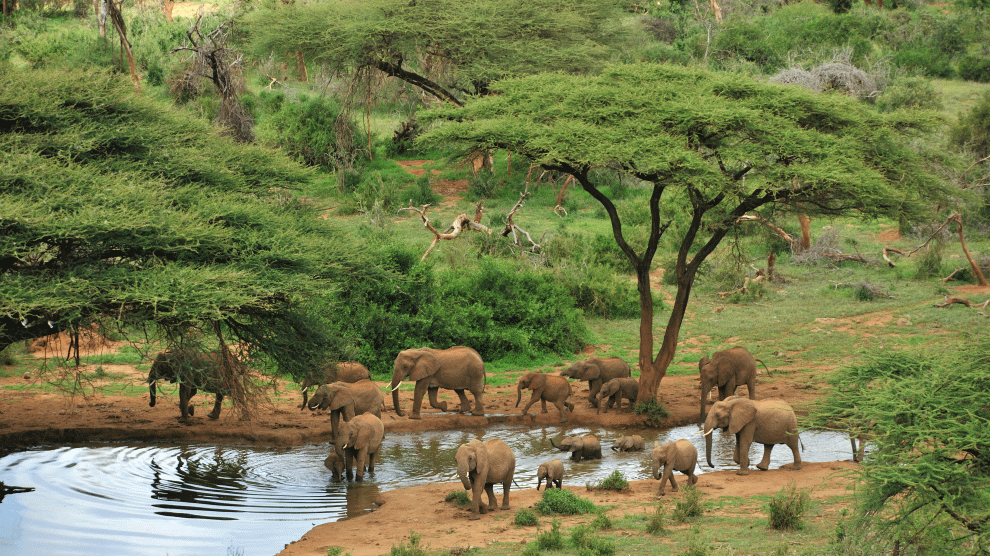
Christophe Cerisier/Getty
This story was originally published by Grist and is reproduced here as part of the Climate Desk collaboration.
As the world increasingly turns toward natural climate solutions like reforestation and grassland restoration to sequester carbon, it may be overlooking a crucial ally: animals.
Protecting existing populations and restoring others to their natural habitats often improves the natural capture and sequestration of carbon dioxide within ecosystems, according to a study published today in the journal Nature Climate Change. Robust populations of just nine species, such as sea otters or gray wolves, or genera, including whales, could lead to the capture of 6.41 gigatons of CO₂ annually, the researchers found. That’s about 95 percent of the amount needed to be removed annually to ensure global warming remains below 1.5 degrees Celsius (2.7 degrees Fahrenheit).
In “Trophic rewilding can expand natural climate solutions,” led by the Yale School of the Environment and the Global Rewilding Alliance, 15 international experts compare the carbon content in savannas, forests, and other ecosystems when their wildlife populations were healthy and when they were below historical numbers. They found multiple cases in which thriving populations of certain species, particularly large vertebrates, through acts like foraging, burrowing, and trampling, increased an ecosystem’s carbon storage capacity by as much as 250 percent.
The researchers argue that these essential species disperse seeds, facilitating the growth of carbon-sequestering trees and plants. Others trample or eat the vegetation that would otherwise rob those trees of space and nutrients. Predators prey on herbivores that, without predation, might adversely impact that essential fauna.
“Ecological science has had a long history of overlooking the role of animals as an important driver of the biogeochemistry of ecosystems,” Oswald Schmitz, an ecologist at the Yale School for the Environment and an author of the study, told Grist. “What we say is that we know animals can change the vegetation makeup of ecosystems, and a lot of ecosystem ecologists say vegetation is important for ecosystem function and carbon cycling, then surely the animals must be important, too.”
According to the study, keeping global warming below 1.5 degrees Celsius above preindustrial levels not only requires reducing fossil fuel emissions but removing around 500 gigatons of atmospheric CO₂ by 2100. Natural solutions, like protecting and restoring forests, wetlands, and grassland ecosystems can help, but such measures, implemented at their current pace, will not do the job in time. Restoring animal populations, or “trophic rewilding,” can accelerate the rates of sequestration and storage in a process called “animating the carbon cycle.”
“Instead of taking 77 years to get that 500 gigatons out, we could actually have that in 35 years,” Schmitz said. “We could do it if we really made a concerted effort to rebuild these populations.”
In Africa, every increase of 100,000 animals in the Serengeti raises the amount of carbon sequestered by 15 percent. Wildebeest are particularly effective allies in the climate fight. More than 1 million of the ungulates migrate across almost 10,000 square miles of savanna. They consume carbon contained in the grasses they eat, then excrete it in their dung. That carbon is then integrated into the soil by insects. They also manage the grasses, mitigating the risk of wildfires. When disease wiped the wildebeest population in the early 1900s, fires grew more frequent and intense, releasing more carbon, transforming the Serengeti from a carbon sink to a carbon source. When the wildebeest population recovered beginning in the 1960s, the Serengeti became a carbon sink again.
Similar examples exist across a wide range of ecosystems. In the Arctic, herds of caribou and other large animals compact snow, preventing permafrost melt. Whales feed in deep waters and release nutrients in their waste at shallower depths, stimulating the production of phytoplankton, which are essential to fixing carbon in the ocean. The animals also are enormous carbon sinks in their own right.
Yet many of these populations face increasing threats from overfishing, habitat loss, impediments to their migratory patterns, and other risks. Losing these species, or even seeing their historic range or numbers decrease, risks transforming the ecosystems they inhabit from carbon sinks into carbon sources.
While animating the carbon cycle has the potential to be a powerful accelerant of carbon removal, the study’s authors warn that trophic rewilding cannot be done without considering unintended consequences. Gray wolves can help carbon removal in boreal forests because they prey on the moose that browse on carbon-storing trees, but they can hurt carbon stores in grasslands, where they eat the elk that stimulate plant production through their grazing. Increases in populations of large animals can increase methane release, an issue that can be offset by reducing domestic livestock populations, according to the study.
Balancing livestock and wildlife populations also raises another central consideration of trophic rewilding: its impact on local human populations. Schmitz said the key to successful trophic rewilding programs is to cater them to local conditions and needs.
Bison, which once roamed North America by the millions, could help store huge amounts of CO₂ in grasslands, but cattle ranchers often resist restoration efforts because of the health threats they can pose for cattle.
“It’s about having people think about themselves as stewards of the land, and we ought to also compensate them for that stewardship,” said Schmitz. “If we would come up with a carbon market that paid the ranchers for the amount of carbon that these bison sequester, they could maybe make more money by being carbon ranchers than they could by cattle ranching.”
What must come first, Schmitz said, is a change in how the global climate community approaches natural carbon solutions. “One of the big frustrations in the conservation game is you’ve got the U.N. Convention on Climate Change, and then you also have the U.N. Convention on Biodiversity, and they don’t talk to each other,” he said. “One is trying to save biodiversity, and the other is trying to save the climate. And what we’re saying is you can do both, with the same thing, in the same space.”
